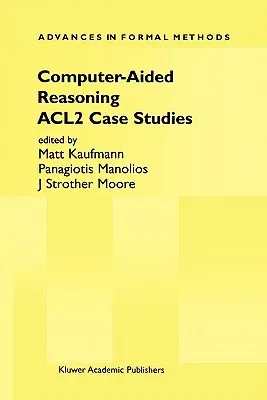Computer-Aided Reasoning: ACL2 Case Studies illustrates how the
computer-aided reasoning system ACL2 can be used in productive and
innovative ways to design, build, and maintain hardware and software
systems. Included here are technical papers written by twenty-one
contributors that report on self-contained case studies, some of which
are sanitized industrial projects. The papers deal with a wide variety
of ideas, including floating-point arithmetic, microprocessor
simulation, model checking, symbolic trajectory evaluation, compilation,
proof checking, real analysis, and several others.
Computer-Aided Reasoning: ACL2 Case Studies is meant for two
audiences: those looking for innovative ways to design, build, and
maintain hardware and software systems faster and more reliably, and
those wishing to learn how to do this. The former audience includes
project managers and students in survey-oriented courses. The latter
audience includes students and professionals pursuing rigorous
approaches to hardware and software engineering or formal methods.
Computer-Aided Reasoning: ACL2 Case Studies can be used in graduate
and upper-division undergraduate courses on Software Engineering, Formal
Methods, Hardware Design, Theory of Computation, Artificial
Intelligence, and Automated Reasoning.
The book is divided into two parts. Part I begins with a discussion of
the effort involved in using ACL2. It also contains a brief introduction
to the ACL2 logic and its mechanization, which is intended to give the
reader sufficient background to read the case studies. A more thorough,
textbook introduction to ACL2 may be found in the companion book,
Computer-Aided Reasoning: An Approach.
The heart of the book is Part II, where the case studies are presented.
The case studies contain exercises whose solutions are on the Web. In
addition, the complete ACL2 scripts necessary to formalize the models
and prove all the properties discussed are on the Web. For example, when
we say that one of the case studies formalizes a floating-point
multiplier and proves it correct, we mean that not only can you read an
English description of the model and how it was proved correct, but you
can obtain the entire formal content of the project and replay the
proofs, if you wish, with your copy of ACL2.
ACL2 may be obtained from its home page. The results reported in each
case study, as ACL2 input scripts, as well as exercise solutions for
both books, are available from this page.


